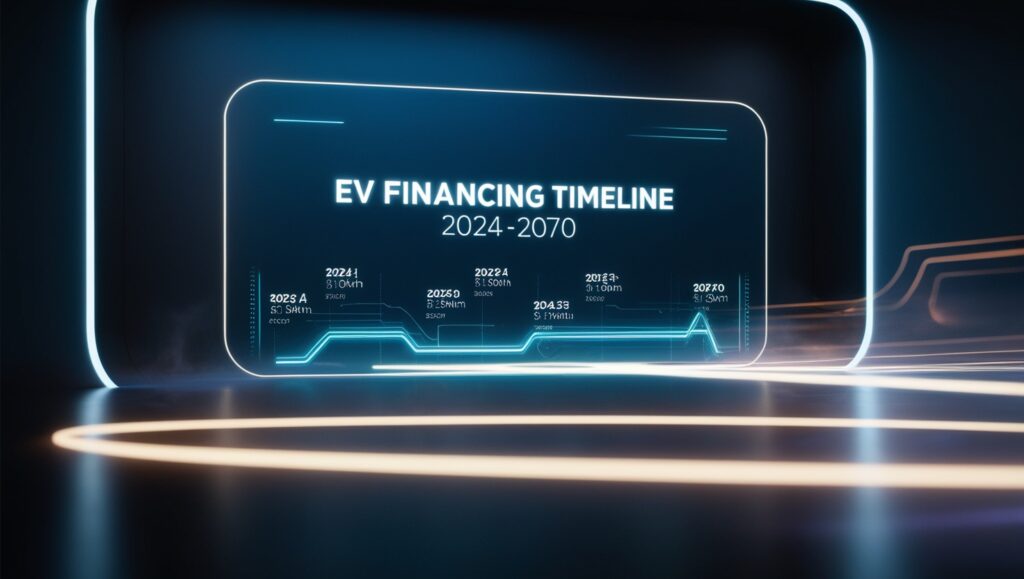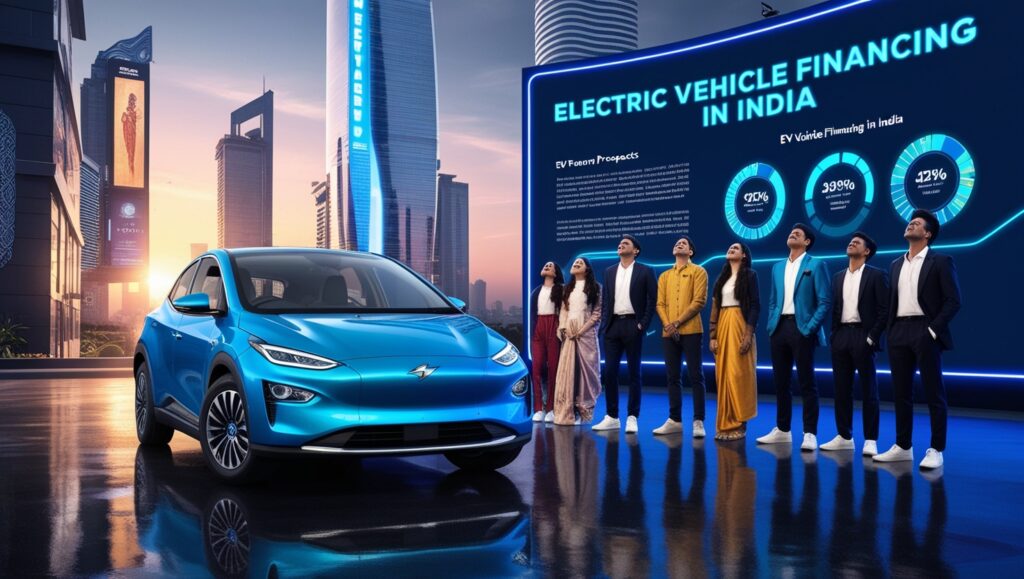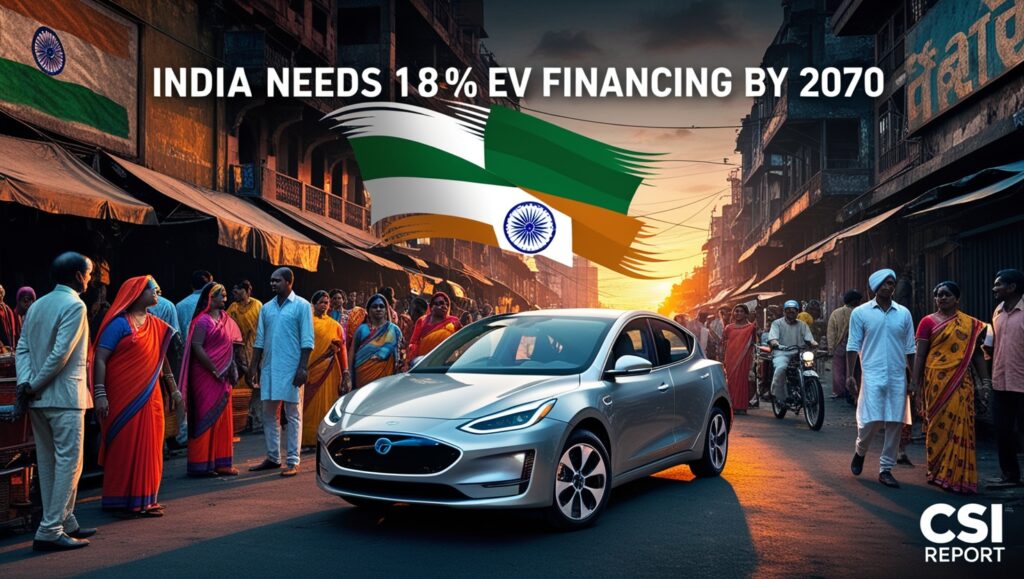A recent report by the Council for Scientific and Industrial Research (CSI) has highlighted the need for 18% EV financing by 2070 to significantly boost the adoption of electric cars (EVs) across the country. This bold step is essential to address environmental challenges, reduce dependency on fossil fuels, and position India as a leader in the global EV market.
In this article, we’ll delve into the intricacies of this report, the potential impact on the EV market, and what it means for consumers and manufacturers alike.
Introduction to the CSI Report
The Council for Scientific and Industrial Research (CSI) has been at the forefront of research and development in India. Their latest report emphasizes the crucial role of financing in achieving the nation’s ambitious electric vehicle targets. According to the report, by 2070, India needs to ensure that 18% of all vehicle financing is directed towards EVs. This strategic move is expected to spur a massive increase in EV sales, contributing to a cleaner and more sustainable environment.
Why 18% EV Financing is Crucial

The 18% financing target is not arbitrary. It is based on extensive research and modeling that considers various factors, including current EV adoption rates, technological advancements, and economic incentives. Here’s why this target is crucial:
Environmental Benefits
EVs produce zero tailpipe emissions, which significantly reduces air pollution. By promoting best electric cars and best electric SUVs, India can mitigate the adverse effects of vehicular emissions on public health and the environment.
Economic Growth
Investing in top electric vehicles can stimulate economic growth by creating jobs in manufacturing, research, and development. This sector’s expansion can lead to increased industrial activity and investment opportunities.
Energy Security
Reducing dependency on imported oil by adopting EVs enhances national energy security. The best electric vehicles leverage local and renewable energy sources, ensuring a stable and sustainable energy supply.
Key Recommendations from the CSI Report

The CSI report outlines several recommendations to achieve the 18% financing target by 2070:
Incentivizing EV Purchases
The government needs to offer substantial incentives for purchasing EVs. This can include tax rebates, subsidies, and lower interest rates on loans for top electric cars and best electric bikes.
Developing Charging Infrastructure
A robust charging infrastructure is critical for the widespread adoption of EVs. Investments in best electric cars charging blogs 2024 and best electric vehicles news can help educate consumers and address concerns about charging availability and convenience.
Public Awareness Campaigns
Educating the public about the benefits of EVs through top electric vehicles news and top electric cars blogs can drive consumer interest and confidence in making the switch.
Current State of the Indian EV Market
Market Growth
India’s EV market has been growing steadily, with several automakers introducing new models. The availability of top electric vehicles brands and top electric cars brands has increased consumer options and competition.
Government Initiatives
The Indian government has launched various initiatives to promote EV adoption, such as the Faster Adoption and Manufacturing of Hybrid and Electric Vehicles (FAME) scheme. These initiatives provide financial incentives and support for top electric vehicles reviews and top electric cars reviews.
Challenges
Despite the progress, challenges remain. High upfront costs, limited charging infrastructure, and lack of consumer awareness are significant barriers to the widespread adoption of electric vehicle today cars blog.
Leading Electric Vehicle Brands in India
Tata Motors
Tata Motors has been a pioneer in the Indian EV market with its popular models like the Tata Nexon EV. Known for their affordability and reliability, Tata’s top electric vehicles have gained significant market share.
Mahindra Electric
Mahindra Electric offers a range of EVs, including the eVerito and e2o Plus. These models cater to various segments and are known for their innovation and sustainability.
Hyundai
Hyundai’s Kona Electric has set a benchmark in the Indian EV market with its impressive range and features. As one of the best electric cars, it has attracted a lot of attention from consumers and industry experts alike.
Top Electric Vehicles in Different Segments
Best Electric Cars
The segment of best electric cars in India is growing, with options like the Tata Nexon EV, MG ZS EV, and Hyundai Kona Electric leading the market. These cars offer a balance of performance, range, and affordability.
Best Electric Bikes
For urban commuters, best electric bikes like the Ather 450X and Bajaj Chetak provide an eco-friendly and cost-effective alternative to traditional two-wheelers.
Best Electric SUVs
SUV enthusiasts can now choose from best electric SUVs like the Tata Nexon EV and the MG ZS EV, which offer ample space, advanced features, and a substantial driving range.
EV Financing Timeline (2024 – 2070)

2024-2030: Early Adoption and Growth
2024: Introduction of more affordable EV models; governments offer significant subsidies and tax incentives.
2025: Major financial institutions start offering specialized EV loans with lower interest rates.
2026: Expansion of charging infrastructure financing; public-private partnerships increase.
2028: Introduction of green bonds focused on EV infrastructure development.
2030: Significant reduction in EV costs due to advancements in battery technology; increased availability of lease options.
2031-2040: Market Expansion and Maturity
2032: Introduction of standardized EV loan products across major markets.
2035: Majority of new vehicle sales are EVs; banks offer competitive interest rates for EV loans compared to traditional vehicles.
2038: Growth in secondary markets for used EV financing options; banks and credit unions offer more tailored financing solutions.
2040: Widespread adoption of EVs; government incentives shift towards supporting second-hand EV markets.
2041-2050: Consolidation and Innovation
2042: Introduction of flexible financing options, including pay-as-you-drive schemes and subscription models.
2045: Financial products begin to include comprehensive packages covering EV purchase, insurance, and maintenance.
2048: Increased integration of renewable energy credits in EV financing agreements.
2050: EVs dominate the global vehicle market; traditional auto loans see a decline.
2051-2060: Technological Integration and Evolution
2052: Autonomous EVs become mainstream, influencing new financing models.
2055: Introduction of blockchain technology for secure and transparent EV financing.
2058: Development of global standards for EV financing; international financing options become more common.
2060: Comprehensive financing packages covering autonomous vehicle software updates and enhancements.
2061-2070: Market Saturation and Future Prospects
2062: Financing shifts towards supporting advanced EV infrastructure, including smart grids and wireless charging.
2065: Introduction of AI-driven personalized financing options based on individual driving habits and energy consumption.
2068: EV financing becomes part of broader smart city development initiatives.
2070: Market saturation; financing models evolve to support sustainable and circular economy principles, focusing on recycling and repurposing EV components.
Key Factors Influencing EV Financing
Technological Advancements: Innovations in battery technology, charging infrastructure, and vehicle autonomy.
Government Policies: Subsidies, tax incentives, and regulatory frameworks.
Market Trends: Consumer demand, production costs, and market competition.
Economic Conditions: Interest rates, inflation, and economic growth.
Environmental Factors: Sustainability goals, climate change policies, and renewable energy integration
Future Prospects of EV Financing in India

Technological Advancements
Technological advancements in battery technology and charging infrastructure will play a pivotal role in achieving the 18% financing target. Innovations like fast-charging stations and improved battery efficiency can make EVs more practical and appealing to consumers.
Financial Products
Banks and financial institutions need to develop specialized financial products to support EV purchases. Lower interest rates, flexible loan terms, and attractive leasing options can make top electric cars price more accessible to a broader audience.
International Collaborations
Collaborations with international automakers and technology providers can accelerate the development of India’s EV ecosystem. These partnerships can bring in expertise, investment, and best practices from global leaders in the EV market.
Impact on Consumers and Manufacturers
Consumer Benefits
Consumers will benefit from a wider range of top electric vehicles brands and best electric vehicles price options, making it easier to find an EV that suits their needs and budget. Additionally, lower operational costs and environmental benefits will make EVs a more attractive choice.
Manufacturer Opportunities
For manufacturers, the push for 18% EV financing presents significant opportunities. Increased demand for EVs will drive production and innovation, helping manufacturers to scale operations and achieve economies of scale.
Conclusion: A Sustainable Future for India
The CSI report’s call for 18% EV financing by 2070 is a visionary step towards a sustainable future. By addressing financial, infrastructural, and awareness challenges, India can become a global leader in the EV market. This transition will not only benefit the environment but also spur economic growth and enhance energy security.
